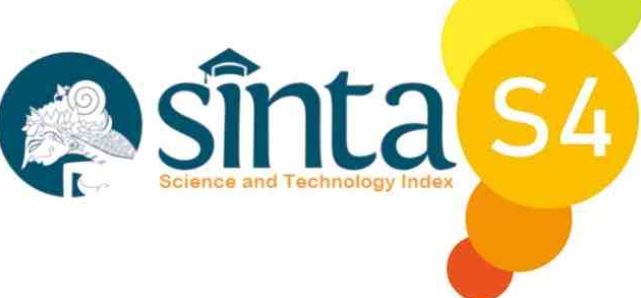Hubungan Komunikasi Interpersonal dan Motivasi Berafiliasi Dengan Intensi Prososial Kelas XI SMU
 ),
), (1) UIN RAden Fatah PAlembang
 Corresponding Author
Corresponding Author
Copyright (c) 2020 Seri Erlita
DOI : https://doi.org/10.24036/rapun.v11i1.108524
Full Text:
 Language : idn
Language : idn
Abstract
Keywords
References
Azwar, S. (1997). Reliabilitas dan Validitas. Yogyakarta: Pustaka Pelajar.
Baron, R. A., & Byrne, D. (2004a). Psikologi sosial (edisi kesepuluh jilid 1). Jakarta: Erlangga.
Baron, R. A., & Byrne, D. (2004b). Psikologi sosial (edisi kesepuluh jilid 2). Jakarta: Erlangga.
Baron, R., & Byrne, D. (1991). social psychology understanding human interaction. Boston: Allyn and Bacon, Inc.
Cashwell, T. H., Skinner, C. H., & Smith, E. S. (2001). Increasing second-grade students' reports of peers' prosocial behaviors via direct instruction, group reinforcement, and progress feedback: A replication and extension. Education and treatment of children, 24(2), 161-175.
Chaplin, J. (1999). Kamus lengkap psikologi. Jakarta: Raja Grafindo Persada.
Cushman, D., & Craig, R. (1976). Communication systems: Interpersonal implications. In G. Miller , Explorations in interpersonal communication (pp. 37–58). Beverly Hills, CA: Sage.
Dayakisni, T., & Hudaniah. (2003). Psikologi sosial. Malang: Universitas Muhammadiyah, Malang Press.
Draper, N., & Smith, H. (1998). Applied regression analysis (3rd ed). New York: John Wiley & Sons.
Eisenberg, N., & Mussen, P. H. (1989). The roots of prosocial behavior in children. New York: Cambridge University Press.
Feist, J., & Feist, G. (2010). Teori kepribadian: Theories of personality ( Edisi 7 Buku 2). Jakarta: Salemba Humanika.
Fishbein, & Ajzen. (1975). Belief, attitude, intention, and behavior: An introduction to therapy and research. California: Addison Wesley.
Greener, S. h. (2000). Peer assessment of children's prosocial behaviour. Journal of moral education, vol. 29, no. 1, 47-60.
Hadi, S. (2004). Metodologi research (Jilid 2). Yogyakarta: Andi.
Husamah. (2015). Kamus psikologi super lengkap. Yogyakarta: Andi Offset.
Kartono, K. (2014). Patologi Sosial 3. Jakarta: PT RajaGrafindo Persada.
Kartono, K., & Gulo, D. (1987). Kamus psikologi. Bandung: CV Pionir Jaya.
McClelland, O. (1987). Human motivation. New York: Cambridge University.
Mercer, J., & Clayton, D. (2012). Psikologi Sosial: Terjemahan dari psychology express . Jakarta: Erlangga.
Myers, G., & Myers, M. (1992). The dynamic of human communication a laboratory approach. Mc. Gray-Hill, Inc.
Pallant, J. (2007). SPSS survival manual: A step guide to data analysis using SPSS for windows (3rd ed). New York: Open University Press.
Rahmat, J. (1994). Psikologi komunikasi. Bandung: CV Remaja Kerja.
Riyono, B. (2012). Motivasi dengan perspektif psikologi islam. Yogyakarta: Quality Publishing.
Scolloa, M., & Carbaugh, D. (2013). Interpersonal communication: Qualities and culture. Russian Journal of Communication, Volume. 5, 95-103.
Sears, D. O., Freedman, J. L., & Peplau, L. A. (1985). Psikologi Sosial (jilid 1): Terjemahan. Jakarta: Erlangga.
Sears, D. O., Freedman, J. L., & Peplau, L. A. (1991). Psikologi sosial (jilid 2): Terjemahan. Jakarta: Erlangga.
Siu, A. M., Shek, D. T., & Lai, F. H. (2013). Predictors of prosocial behavior among chinese high school students in hong kong. Int J child helath hum dev, 6(1), 103-111.
Sobur, A. (2003). Psikologi umum. Bandung: Pustaka Setia.
Staub, E. (1978). Positive social behavior and morality social and personal influence. New York: Academic Press, Inc.
Staub, E., Daniel, Karylowski, J., & Reykowski, J. (1984). Development and maintenance of prosocial behavior (international perspectives on positive morality). New York: Plenum Press.
Vito, J. D. (1995). The interpersonal communication (seven edition). New York: Harper and Row.
Walgito, B. (1997). Pengantar psikologi umum. Yogyakarta: Andy Offset.
Winarsunu, T. (2004). Statistik dalam penelitian psikologi dan pendidikan (ed.1). Malang: UMM Press.
 Article Metrics
Article Metrics
 Abstract Views : 977 times
Abstract Views : 977 times
 PDF Downloaded : 335 times
PDF Downloaded : 335 times
Refbacks
- There are currently no refbacks.
Copyright (c) 2020 Seri Erlita

This work is licensed under a Creative Commons Attribution-NonCommercial 4.0 International License.






